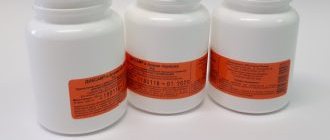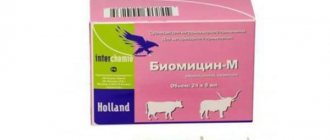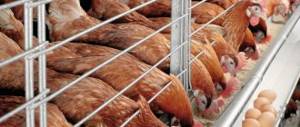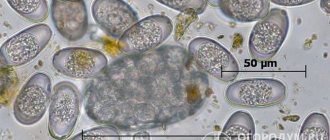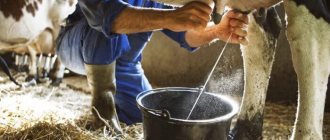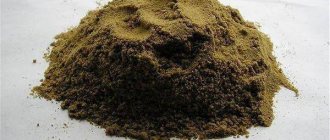What is lactic acid used for? Lactic acid properties and application
The product “Lactic acid” is used both in medicine and in other areas of human activity. In its natural form, the substance is a syrupy, colorless or slightly yellowish liquid with a specific odor and sour taste. The drug belongs to the category of alpha hydroxy acids and is non-toxic.
Properties of the drug
The drug is obtained through the fermentation of lactose- and sugar-containing raw materials with lactic acid bacteria. The substance dissolves easily in glycerin, alcohol and water. In medicine, the element is included in a special product because it has moisturizing properties. The exfoliating effect of the drug is known. “Lactic acid,” the properties of which determine its demand, like other alpha hydroxy acids, breaks down the protein bonds between dead skin cells. This promotes the detachment of cells and allows them to be washed away from the surface of the skin. In addition, the product has antimicrobial and anti-inflammatory properties; it creates an acidic environment that is destructive for various microbes, fungi and parasites. It is also known about the moisturizing, whitening and brightening effects of the drug. This causes the presence of acid in the compositions of many cosmetics and shampoos. The substance is used to treat acne; the acid reduces stretch marks on the skin, smoothes out small wrinkles, reducing their depth, strengthens and refreshes dehydrated and sagging skin, improves its color and elasticity. The element also effectively eliminates sweat odor.
Product "Lactic acid": application
The substance is used to make soap, for which it is added to an alkaline solution and sodium lactate is obtained or added to the finished soap composition as an acidity regulator and active component. Using the element, rejuvenating, regenerating, cleansing lotions, serums and creams are made, in which lactic acid allows the active ingredients to penetrate deeper into the skin. The product is used for peeling, as it improves the exfoliation of keratin surface scales, has powerful moisture-retaining and moisturizing properties, promotes skin renewal, makes it velvety and soft, and activates the immune system. As part of depigmenting agents, “Lactic acid” is used to remove various pigmentations, lentigines, freckles, chloasma, and age spots.
Precautionary measures
When used in its pure form, “Lactic acid” causes necrolysis of the mucous membranes; it should not be used for skin lesions. When used in cosmetics, the substance may dry out the skin. When used correctly and in accordance with the dosage, the acid does not cause side effects.
All about lactic acid
Lactic acid (lactate) is a chemical reagent that is formed as a result of the breakdown of glucose and its derivatives. It is an integral part of many biochemical processes in the body. Lactic acid appears to be a syrupy, transparent or yellowish liquid with a faint odor and a specific sour taste. Lactate is soluble in alcohol, glycerin and water. The first mention of it was made by the Swedish pharmaceutical chemist Karl Wilhelm Scheele (1780). The main area of application of this chemical reagent is the food industry (food additive E270, and its salts - E271-279).
Impact on the body
Lactic acid is a natural biological substance that is a component of metabolism - metalbite.
For a long time, scientists believed that lactic acid was the cause of lethargy, fatigue, cramps, numbness in the limbs and muscle pain. But later this opinion was refuted exactly the opposite. Researchers from many countries have proven that lactic acid produces energy during physical activity. This chemical promotes the absorption of carbohydrates and provides “fuel” to many tissues and organs, including the liver.
You need to know that lactic acid: - helps relieve stress when the body is overly excitable; - absolutely harmless; - does not cause convulsions; - produced by the body during the breakdown of carbohydrates; - formed in muscles due to a large amount of oxygen; - many tissues, namely skeletal muscles, constantly produce and use it; - the heart uses lactate as the main source of energy; is a “fast fuel” that increases performance under high loads.
Lactic acid in cosmetology
This popular chemical reagent began to be used in cosmetology and dermatology only in the 60-70s of the last century. The benefits of lactic acid for the body are enormous, especially for the skin, because it is part of the natural moisturizing factor (NMF), being a related component to our body, so its intake into our body in moderation is very important.
Among all fruit acids, it is the most valuable due to its unique properties and cosmetic effects: - moisturizing; - bleaching; - exfoliation; - refreshing effect; - smoothing out small wrinkles; - cleansing from acne, pimples; - regulation of skin acidity - pH; - eliminating the smell of sweat.
Lactic acid can solve many cosmetic problems when used correctly.
Lactic acid in cooking
Lactic acid is a natural product that is used in almost all areas of the food industry: milk processing, fat and oil processing, canning, meat processing, and fish.
The main area of application is the production of fermented milk products. It is obtained by fermenting sugar waste from dairy production with lactic acid bacteria. Used in the production of: — soft drinks; — baby food; — animal feed; - mayonnaise; - sauces; - seasonings; — confectionery products; - dairy products.
Safety precautions when working with lactic acid
Despite the harmlessness of lactose, do not forget that it is, first of all, an acid. And when working with any type of acid, precautions must be taken. To prevent concentrated lactic acid from getting into your eyes, you should wear special safety glasses, and to protect your hands, nitrile gloves or examination gloves. All work should be carried out using laboratory glassware, since glassware made of any other material can react with acid.
Chemical reagent E-270 should be stored exclusively in special containers that exclude the possibility of direct sunlight, and the room temperature should not exceed 20 °C.
You can buy high-quality lactic acid at a profit!
The chemical reagents market offers a huge selection of products for laboratories and medical institutions. However, price and quality often vary. The Prime Chemicals Group company offers consumers only high-quality products at the most reasonable prices. It is in our Moscow retail chemical reagents store that you can find the product you need and purchase it both retail and wholesale. All products in the store, from laboratory equipment and instruments to laboratory glass, have passed quality control and meet all GOST standards. You can buy almost all types of acids, including lactic acid, quickly, easily and inexpensively!
"Prime Chemical Group" works for you!
Contraindications and side effects
The drug is not used in piglets with chronic diarrhea. No side effects have been identified with the correct dosage. Undiluted product can cause necrosis of mucous membranes when taken orally.
When used externally - irritation of the integument.
Contraindications to the use of the composition:
- acute liver failure;
- hyperacid gastritis;
- tuberculosis;
- weeping and ulceration on the integument.
After application or oral administration of lactic acid, animal products can be consumed as human food without restrictions. Moreover, the use of the solution is important for disinfecting meat.
Composition and release form
Composition of two capsules:
- Hyaluronic acid (sodium hyaluronate) – 50 mg.
- Glucosamine sulfate 2KCl (GreenGrown) – 750 mg.
- MSM (methylsulfonylmethane OptiMSM) – 500 mg.
- Sodium chondroitin sulfate (Mythocondro) – 200 mg.
- Sodium (from Mythocondro and sodium hyaluronate) – 20 mg.
- Chloride (from glucosamine sulfate 2KCl) – 90 mg.
- Potassium (from glucosamine sulfate 2KCl) – 100 mg.
The composition is supplemented with microcrystalline cellulose (vegetable source), silicon dioxide, stearic acid (from non-GMO palm oil), modified cellulose (part of the vegetable capsule).
The drug is made without the addition of wheat, soy, gluten, fish, shellfish, crustaceans, tree nuts, peanuts, eggs, and milk. Manufactured in accordance with cGMP requirements in a facility that may process other products containing these components.
Contains no soy, GMOs, gluten, or animal ingredients.
Release form: jar containing 90 vegetable capsules.
Application
Lactate is used externally and internally.
External use
Lactic acid is used under the following circumstances:
- Disinfection.
- Treatment of skin diseases.
Disinfection
There are the following methods for disinfecting rabbit hutches:
- No rabbits. Before use, the drug must be diluted to 20% concentration. The resulting emulsion is sprayed. The room is kept for 30 minutes or more. Rabbits are placed in cages after airing for half an hour. washing feeders, changing water. Such treatments are recommended to be carried out twice a year, as well as a decade before the birth, and immediately after the babies are separated from the rabbits. The young animals are placed in pre-treated cages.
- With rabbits. Prepare a 3% solution and spray it in half an hour.
Treatment of skin diseases
To treat ulcers on the skin and mucous membranes, lactic acid must be diluted to 20–40% concentration. Lactate successfully burns out warts, calluses, and tumors. For this, at the discretion of the veterinarian, use a 15–30% solution. Hydroxypropionate is able to eliminate rashes and stop the inflammation process that has developed on the skin of a rabbit. To do this, it is necessary to irrigate the affected areas with 10% Lactate until cured.
Indoor use
Lactic acid is prescribed orally for the following purposes:
As a dietary supplement.
Lactate helps increase the digestibility of roughage and concentrates. This fact allows the use of Oxypropionate to stimulate the growth of rabbits. Most often, lactate begins to be given to separated young animals from 6–7 weeks of age as part of mixed feed, sanitized at the rate of 0.5 ml per 1 kg.
For the treatment and prevention of nutritional diseases, Lactic acid is used with drink or food at the following dosages, according to the attached table.
What is lactic acid used for?
The drug is prescribed in veterinary medicine for the treatment of gastritis with low acidity, intestinal inflammation, tympany, gas formation and bloating, enteritis, acute diarrhea, and coccidiosis. And also for effective and rapid prevention of these violations.
It is used both as a remedy that relaxes the sphincters and as a cauterizing agent for trichomoniasis. Externally used for ulcers on the skin and mucous membranes as a cauterizing agent. Acid in the form of an aerosol is sprayed into the barn for disinfection; inventory and work equipment are treated.
Use of lactic acid for rabbits
The branch of animal husbandry such as rabbit breeding is becoming increasingly popular. Unfortunately, rabbits are often susceptible to various diseases.
Lactic acid is widely used in veterinary medicine, the instructions for use of which must be followed. This acid is suitable for disinfecting feed and the entire rabbitry, and increases the sexual activity of animals. Acid is also used for better digestion of food, and it also prevents stomach bloating, which can occur due to feeding rabbits at home a large amount of roughage. In rabbit farming, lactic acid is used for internal and external use. Before using lactic acid, you should consult with specialists.
Animals are given acid internally for better digestibility of light food and to ensure that roughage is well digested. All this leads to faster muscle growth in animals, making raising rabbits more profitable. Lactic acid is used to prevent viral and parasitic diseases. For bloating in rabbits, use lactic acid in the following dosage: 2 tbsp. l. This product is diluted in 10 liters of water and the solution is drunk throughout the day. To disinfect food when feeding rabbits at home, it is necessary to use 0.5 ml (4%) of an acid solution per 1 kilogram of food.
Lactic acid is successfully used for damaged animal skin. For cauterization, a 20-40% acid solution should be prepared, and for disinfection, a 30% solution is sufficient. Lactic acid is used for various wounds and when the animal is affected by fungal diseases. To treat the room, you should prepare a more concentrated solution of lactic acid. The treatment can also be carried out in the presence of rabbits by aerosol; for this, a solution of the same concentration should be used as for oral administration. This method can be considered preventive, since this drug gets onto the mucous membranes of rabbits and into the respiratory tract. Where to buy lactic acid? The answer is simple: in pharmacies and veterinary stores. This is an inexpensive but quite effective remedy.
Sources
- https://homeferma.com/medicines/molochnaya-kislota-instrukciya-po-primeneniyu-v-veterinarii.html
- https://fb.ru/article/260682/molochnaya-kislota-dlya-litsa-pokazaniya-i-instruktsiya-po-primeneniyu-otzyivyi
- https://sunmag.me/sovety/23-01-2014-molochnaya-kislota-v-kosmetologii.html
- https://dachadizain.ru/zhivotnye/veterinarnyj-preparat-molochnaya-kislota.html
- https://milomarket.com/213-molochnaya-kislota.html
- https://www.syl.ru/article/338741/molochnaya-kislota-instruktsiya-po-primeneniyu-v-veterinarii-molochnaya-kislota-dlya-krolikov-i-krupnogo-rogatogo-skota
- https://fb.ru/article/181158/molochnaya-kislota-instruktsiya-po-primeneniyu-v-veterinarii-dlya-krolikov-telyat-ptits
- https://fermers.ru/veterinariya/preparaty/molochnaya-kislota
- https://rosy-cheeks.ru/molochnaya-kislota-dlya-lica.html
What else can lactic acid do?
Lactic acid is present in the skin's natural moisturizing factor, where it is responsible for regulating the acid-base balance and helping maintain hydration levels. Research has also shown that this type of acid is involved in the synthesis of ceramides, which the skin needs to maintain a protective barrier.
Another use of lactic acid is to treat hyperpigmentation. Baghdad researchers used a solution with a high concentration of the component on the skin of patients with melasma and noticed an improvement in the condition of the epidermis without pronounced side effects.
Lactic acid is also suitable for the most common beauty needs - wrinkle prevention and acne treatment. Thus, the Institute of Medical Sciences in New Delhi proved that after 8 weeks of using a solution with 5% lactic acid, the number of rashes on the skin of patients decreased significantly. To correct wrinkles, according to another experiment, a solution with 12% lactic acid is suitable, which improves the elasticity and density of the skin. Scientists also came to the conclusion that at high concentrations the substance affects not only the epidermis, but also the dermis.
If the skin is not yet familiar with acids, you should first consult with a specialist, and then introduce lactic acid into your skin care in small quantities. You can use the component at any time of the year, as long as you do not forget about the importance of SPF - sun protection is very important for renewed skin.
Stages of milk peeling
Before performing milk peeling, cosmetologists recommend protecting the skin from sunlight for 14 days.
If it's summer, apply sunscreen and wear a wide-brimmed hat. Delicate skin needs to be strengthened at night - apply cream with lactanic acid. The peeling procedure itself occurs in five stages.
Makeup removal. Pre-pilling procedures.
The cosmetologist treats the skin by applying a component with a low content of active substance. Thanks to this, lactic acid evenly penetrates and evens out the stratum corneum.
Pilling.
The skin is covered with an acid solution in percentage terms from 35 to 90%. The product is applied in two stages. The cosmetologist independently determines how long each layer is kept. The time should not be less than 2 minutes and no more than 20.
Neutralization of the active substance and its removal.
At this stage, the acid is applied in a cold state. The fact is that a hot substance can interact and cause an allergic reaction.
Using a mask with a moisturizing effect.
The duration of peeling and related procedures is forty minutes. The patient may feel a burning sensation and heating, which disappears after neutralization.
Using lactic acid at home: features
It’s easy to perform peeling at home if you follow the conditions and prepare the preparations in advance:
lactic acid in solution; cotton wool, cotton pads and medical alcohol; fan, hair dryer, which are necessary for cooling.
Prepare the solution in advance in the desired concentration. Dilute according to instructions. It details the sequence and proportions for preparation. The best concentration is 35%-65%. It is most often used in cosmetology salons.
In home situations, it is recommended to prepare a solution in a lower concentration. In accordance with the advice of cosmetologists, a homemade solution of lactic acid should not exceed 4%.
Prepare your face. Wipe with regular cleanser and dry thoroughly. Wipe with a cotton pad and alcohol.
Apply the solution by wiping the surface, avoiding the areas around the eyes and nasolabial folds. Leave the product on for up to 120 seconds and rinse with cool water. You should also wash off the product if you feel a burning sensation.
When performing milk peeling at home, it is important to follow the rules that will make the procedure safe. Protect delicate skin
Protect delicate skin.
Lubricate problem areas with Vaseline to neutralize the effect of acid in case of contact. Vaseline also has a moisturizing effect.
Follow the sensations.
If you experience any discomfort, fan your face or blow cold air from a hairdryer. The product should be washed off only with cold liquid. Hot water can activate the reaction process. During the first 24 hours, use moisturizers and avoid greasy creams with acid hydroxide and retinoid.
Increase the procedure time little by little, as well as the acid concentration. Depending on the skin type, a peeling course may consist of 4 procedures, each of which is performed no earlier than two weeks later. If you experience any unpleasant reaction, avoid exfoliating at home.
Care after peeling
After the procedure, the skin is red. The redness goes away after two days. On the second day, the skin begins to peel off, avoid scratching and do not apply decorative cosmetics. Normalization will occur in a week. During this time, you should apply sunscreen with filters to your skin to protect it from additional exposure.
Do not use cleansing gels and scrubs so as not to injure the delicate surface. Avoid overheating; you cannot visit the bathhouse or fitness room, as sweating slows down the separation of keratinized particles.
A course of superficial peeling with lactic acid is performed for 4 weeks, 2 times every 7 days.
After the third procedure, facial wrinkles are smoothed out, the color becomes even, and turgor increases. The effect lasts for 12 months, after which the course should be repeated every six months.
Lactic acid for birds
Determines the order of such a product as lactic acid, instructions for use. Veterinary medicine provides a complex of nutritional and vitamin supplements for birds of any age that stimulate egg production and growth. Most often, metabolic agents are used for these purposes, which include lactic acid. This product, along with its antimicrobial properties, is an intermediate link in the metabolic process of poultry. In this regard, it has advantages over other analogues, since it has a direct effect on the pituitary gland and hypothalamus, similar to that of plant adaptogens. To strengthen the body's resistance and increase the number of follicles, add 3-4 liters of a 4% lactic acid solution to the daily diet of laying hens.
Lactic acid in cosmetology
Lactic acid is an excellent keratolytic. This tricky word refers to substances that can exfoliate dead cells from the surface of the skin. This is why lactic acid is so popular in cosmetology and is often included in the formula of various care products: creams, masks, gels and liquid soap.
Its molecule is so tiny that it easily passes through cell membranes, due to which it is subject to such pathological skin conditions as, for example, hyperkeratosis. Due to its gentle effect on the skin, it can be used even by those with sensitive skin types.
Cosmetics containing lactic acid can:
- tighten pores;
- eliminate inflammation on the skin;
- bleach;
- get rid of age spots;
- eliminate not deep scars, scars on the skin.
Although in our country it is considered a safe substance, as with any product, there are still some restrictions
So, you should use any “acid” cosmetics with caution:
- if you have an allergic reaction to acids;
- after prolonged exposure to the sun;
- during pregnancy;
- if there are open wounds, herpes.
Preservative E270 in cosmetology
Acid-based products are very popular in modern cosmetology. One of the most popular for use in cosmetics is lactic acid. The preservative based on lactic acid has a safe natural origin, and therefore its presence in cosmetics is not a disadvantage.
Properties of lactic acid in cosmetology and cosmetics:
- Exfoliation
- Narrowing pores
- Whitening
- Elimination of imperfections and inflammation
- Getting rid of small and shallow scars
Lactic acid has excellent properties to exfoliate dead skin cells. Its presence in creams, masks, gels and soaps helps get rid of acne, hyperkeratosis, peel deep layers, correct skin defects, and even whiten age spots. It’s not for nothing that milk-based products have been used since ancient times, since milk is a source of lactic acid and helps renew the skin and preserve youth.
Lactic acid is one of the fruit acids, also known as AHAs (alpha hydroxy acids). It is on a par with such acids as: glycolic, citric, pyruvic, malic, phytic, mandelic, succinic, ferulic, tartaric.
Fruit acids are able to penetrate into the layers of the skin, but only on its surface, because of this they have only a mild effect on the skin, exfoliating only the top layer, stimulate natural renewal, promote the production of elastin and collagen.
Lactic acid is a popular product used in gynecological products. In intimate hygiene products, this substance is used as an acidity regulator. Liquid intimate hygiene products often contain lactic acid and phyto-ingredients, and are developed and approved by international gynecologists. It is E270 that maintains the natural pH in such products.
What is lactic acid
Not everyone knows what lactic acid is, although this substance is widely used in the food industry and is itself produced under certain conditions. For example, it appears during fermentation and pickling of vegetables. In its pure form, lactic acid is a slightly yellowish liquid without much odor, but with a sour taste. Under industrial conditions, it is extracted from fermented sugar-containing products (lactose) with the participation of lactic acid bacteria. Due to its strong antimicrobial effect, lactic acid has found wide use as a remedy against fungi, mold, and as an antiseptic.
But if its use in the food industry is clear and justified, then how is lactic acid used and why do rabbits need it? As it turns out, its scope of use here is quite extensive. Firstly, it improves the digestion of animals when added to feed, and prevents the formation of bloating when feeding roughage. Secondly, it can disinfect the food and place where rabbits are kept. And thirdly, as long-term practice shows, it has a positive effect on the sexual activity of animals.
Today, lactic acid is freely available for sale not only in veterinary pharmacies. It is sold in different packaging and concentrations. So, for example, there is a 40% and 80% solution in containers of 100 or 500 ml. Which to choose? This depends on the goals and the required dosage of the product. For external use as a disinfectant, you can take a more concentrated solution, but for internal use, a less concentrated one.
Lactic acid in the food industry
In the food industry, lactic acid is commonly known as acidity regulator and E270.
In food products, E270 acts as:
- oxidizer
- preservative
The action of E270 as a preservative is aimed at suppressing the vital activity of microorganisms and other types of bacteria. Under the influence of lactic acid, food subject to long-term storage does not acquire an unpleasant taste and smell, and does not spoil. But the effect of one preservative (for most products) is not enough. For reliability, aseptic packaging and sealing are used with E270.
As a food additive, lactic acid (E270) is approved for use in all countries.
Possible names for lactic acid:
- E270
- Lactate
- hydroxypropionic acid
- D.L.–Milchsaure
- D.L.–Milchsaure
Lactic acid is produced by fermentation of carbohydrate-containing foods. The food additive E270 is a combination of lactic and lactyllactic acids; lactic acid bacteria Lactobacillus and Lactococcus are used to produce it.
The scope of application in the food industry is huge. E270 is used for the following types of food products:
- confectionery
- juices, nectars, lemonades, other carbonated drinks,
- sauces based on vegetable oils, mayonnaise
- beer
- canned vegetables, meat, fruit
- vegetable oils, margarine, spread
- alcoholic products
- baby food
- cheese and dairy products
- semi-finished fish products
Examples of products containing the food additive E270 are: “Sour Cream and Onion” chips, “Kondissima” marshmallows, “Roshen” truffle chocolate roll, “Provansky” mayonnaise produced by Torchin, “Sombrero” Bonduelle salad, “Veladis” cod caviar, green olives “ Bonduelle", Hol's lollipops.
Important properties of food lactic acid:
- preservation and extension of shelf life of food products
- acidity regulation
- improving the taste, color, consistency of finished products
- protection against spores and bacteria
Also, you may be interested in the article: “Lactic acid: history and effect on the human body.”
Pharmacological properties
Due to increased functionality of a number of sections of the gastrointestinal tract, more active formation of chewing gum occurs. As a result, an irritating effect is exerted on the mucous membranes. Thus, metabolic processes are accelerated.
But when lactate is applied externally, it turns out:
- keratolytic (10% solution);
- antiseptic (10-30% solution);
- cauterizing effect (10-50% solution).
The choice of concentration will depend on the specific diagnosis and recommendations of the veterinarian. If the undiluted composition gets on the mucous membranes, they must be quickly washed with clean water (warm).
In case of contact with skin, wash with water and soapy water.
Instructions and indications
As already mentioned, lactate has antimicrobial, antifermentation and antiviral effects. It suppresses the development of pathogenic intestinal microflora, which is formed during the decay of organic residues, and also reduces the production of putrefactive toxins. The drug is indicated for tympany of the proventriculus, gas formation, chronic or acute dilatation of the stomach in ungulates, rabbits, birds, dogs and cats. The dosage of the product is calculated as follows. At a lactic acid concentration of 47.5%, the doses are:
- for cattle - 15.5-25.5 cubic meters. cm;
- for small livestock – 1-5 cubic meters. cm;
- for horses - 8.5-25.5 cubic meters. cm.
At a lactic acid concentration of 80%, the dose is:
- for cattle – 10-16 cubic meters. cm;
- for small livestock -0.5-2.8 cubic meters. cm;
- for horses - 5-15 cubic meters. cm;
To use, the solution must be brought to a 2% concentration. Due to the lack of toxic properties, the solution can be used many times until the desired result is achieved. Due to the antiseptic effect that lactic acid has, the instructions for use in veterinary medicine allow it to be used for cauterization purposes. An 80% solution softens ulcerating skin lesions and the growth of keratinized tissue, removes neoplasms. A 10% concentration is suitable for the treatment of fistulous manifestations of hoof cartilage. If lactic acid comes into contact with your skin, it is recommended to wash the area with soap and water. In case of contact with mucous membranes, use warm water. The bottle with the drug should be stored in a place inaccessible to children and animals, separately from food products and household chemicals.
Lactic acid in gynecology
Abroad, lactic acid has been included in various intimate hygiene products since the very beginning of the “era of fruit acids” - since the 80s. XX century. In our country, such means are also becoming increasingly popular.
Liquid soap for intimate hygiene with lactic acid and chamomile extract, as well as cream soap with lactic acid and calendula extract from EVO laboratories are developed and produced with the direct participation of gynecologists.
There is no alkaline soap in “EVO intimate” cosmetic products for skin care of “tender areas”. The natural pH level of the intimate area is maintained thanks to the properties of lactic acid, which also works against irritation and dryness. And the natural antiseptics in its composition (chamomile, calendula, string extracts) are effective in preventing inflammatory processes in the genitourinary system.
Regular use of cosmetics containing lactic acid will not only allow your skin to remain healthy and youthful. You yourself will begin to change and blossom before your eyes. Just try and see for yourself.
Lactic acid in veterinary medicine: application and general information
In veterinary medicine, lactate of biological or organic origin is used in the form of a solution in purified water. The synthetically produced product can also be used for therapeutic purposes. The solution has a slightly viscous consistency, transparent, less commonly yellowish in color, the taste is sour, there is no smell. The chemical formula of the drug is CH2 CH(OH)COOH-2, another name is “hydroxypropionic acid”.
This drug is produced by the body naturally, therefore it is safe and effective even when treating young children. However, it is prohibited to use it yourself. Only a veterinarian can prescribe an adequate course of therapy. Lactic acid activates the motility of the forestomach and enhances the formation of chewing gum. Instructions for use in veterinary medicine recommend using products such as lactic acid for the treatment of ruminants, rabbits and birds. Lactate is sold in vials and bottles with a concentration of the substance of 47.5% and 80%. Package sizes are 20, 200, 500 and 1000 mg.
Application and dosage
One use is as a dietary supplement by mixing with water.
There are quite a few options for using acid:
- as a dietary supplement (with food and drink);
- for processing household equipment, cauterizing wounds and growths;
- preventive spraying of rabbitry.
Internal use
If rabbits consume the substance orally, then it is necessary to make a 2% (4 - 7.5 ml per individual) or 3% (dosage 3-5 ml) solution. Internal reception is usually prescribed with the presence of:
- enteritis;
- gastritis;
- trichomoniasis;
- bloating of the intestines or stomach;
- flatulence.
You can give acid to baby rabbits to prevent all these conditions 45 days after birth (when they are already separated from their mother). For this purpose, it is enough to dilute a couple of tablespoons of the substance in 10 liters of water and pour this solution into drinking bowls.
If the flatulence is too strong, you need to make a 5% solution and give it to the animal 4 ml at a time. Acid, among other things, helps relax the gastric and intestinal sphincters, reduces the volume and rate of formation of breakdown products.
Spraying
When spraying food, you will need half a milliliter of solution per kilogram of food. Its concentration can be 1 – 4% at your choice. A similar drug is allowed to be used for treating premises.
Spraying the drug is used to disinfect rabbit hutches and prevent diseases.
External use
The following properties of the substance are useful for external use:
- cauterizing (20-40% solution);
- disinfectants (15-30%);
- keratolytic (10%).
All this is necessary to get rid of peptic ulcers and keratinized formations.
Lactic acid for calves
Lactic acid is widely used to maintain health and stabilize the digestion of young ruminants. Instructions for use in veterinary medicine for calves specify dosages that are lower than for adult animals.
Calves often suffer from acute dilation of the stomach, which occurs due to eating easily fermented feed: clover, wheat, bread, young oats. Another cause of the disorder may be drinking directly after consuming foods that quickly swell in the stomach. Lactic acid is considered the most effective way to stop the fermentation of feed in the stomach. Instructions for use in veterinary medicine indicate the absence of side effects in young ruminant animals, since lactate is completely assimilated and absorbed by the body, also acting as an additional source of energy.
Lactic acid, also called hydroxypropionic acid or lactate, is an organic substance released during lactic acid fermentation, for example, during souring of milk or during canning of vegetables. It is present in the tissues of living beings, including muscles, blood and urine. It can be produced by bifidobacteria, lactobacilli and actinomycetes - microorganisms that live in the intestines. Some other bacteria that inhabit the intestines feed on lactic acid, converting it into other compounds needed by the body. Lactate is widely used in veterinary medicine as an antiseptic, as well as to normalize digestive processes.
Lactic acid is a syrupy, colorless or slightly yellowish substance, with a faint specific odor and sour taste. It contains about 75% lactic acid itself and about 15% its anhydride. Has a specific gravity
1.2. Mixes in any ratio with water, ether, alcohol and glycerin. In veterinary medicine, natural lactate is usually used, less often synthetic.
Lactic acid is available in glass bottles or polymer bottles of 20, 100, 200, 500 and 1000 ml. The concentration of the drug is 40%, or 80%.
If lactic acid gets on the surface of the skin, it must be washed off with soap and water; if it affects the mucous membranes, rinse with plenty of warm water.
Store the drug away from food and household chemicals, in a place inaccessible to animals and children, at a temperature from -40°C to +35°C, for ten years.
When used internally, a solution of lactic acid has an antiseptic and anti-fermentation effect. Relieves spasms of the sphincters of the digestive tract, promotes faster movement of chyme. Stimulates the digestive glands.
Strengthens the motility of the rumen, mesh and book, and the formation of chewing gum. It has an irritating effect on the mucous membranes of the digestive organs, accelerating metabolic processes. Undiluted lactate leads to necrosis of the mucous membranes.
When applied externally, the solution has the following properties:
- disinfectants (10-30%);
- keratolytic (10%);
- cauterizing (10-50%).
Lactic acid is used to treat various diseases in cattle, goats, sheep, chickens, externally or internally.
- For trichomoniasis in cows, a 0.5-1% lactate solution is used for vaginal douching.
- Two tablespoons of the drug, diluted in ten liters of water, are given to rabbits throughout the day to improve feed absorption. Rabbit feed is disinfected with a 4% lactic acid solution.
- To strengthen the immune system, increase egg production and weight gain, chickens are given 0.5 ml of a 40% solution per 1 kg of feed every day. This has a positive effect on the strength of the eggshell.
- As a cauterizing agent, lactic acid is used to disinfect the air of incubators and poultry houses (against pathogens of diseases such as typhoid, cholera, pullorosis, respiratory mycoplasmosis and infectious laryngotracheitis of birds). 15-20 ml of acid are consumed per 1 m³ of space. Lactic acid vapor has a detrimental effect on streptococci and staphylococci, so lactate is used for aerosol disinfection of livestock buildings.
- To prevent respiratory diseases in calves and chickens, lactic acid is used together with iodotriethylene glycol (chickens - 0.5 ml, calves - 0.5-1 ml of a 40% solution per 1 kg of feed).
- Externally, a 10-50% solution of lactic acid, ointments and pastes containing it are used to treat ulcers of the mucous membranes and skin, warts, calluses, fistulas of the hoof cartilage. An 80% solution removes neoplasms and has a keratolytic effect on the growth of keratinized tissue.
To treat rumen tympania in cattle, goats and sheep, as well as flatulence, hypoacid gastritis, acute dilatation and chronic inflammation of the stomach, gas formation in horses, pigs, rabbits, dogs and fur-bearing animals, lactic acid is used orally.
To do this, use an aqueous solution of the drug, the concentration of which does not exceed 2% (that is, add 20 ml of water to 1 ml of 40% lactate, or 100 ml of water to 5 ml of 40% lactate). It is given to animals in the following doses:
Animal
Dosage , ml
A first aid kit for chickens is important for caring for growing birds, since they are usually more susceptible to various bacterial and viral diseases compared to their older relatives. The causes of illnesses can be incorrect living conditions, for example, untimely cleaning of the premises, as well as insufficiently fortified nutrition.
Lactic acid for animals
For prevention and treatment, 40% lactic acid is used for oral administration. The calculation per head is:
- for horses – from 8 to 35 ml;
- for calves – from 2.5 to 7.5 ml;
- for cattle – from 12 to 40 ml.
The main food for cows is roughage: straw, hay, silage. Acid is required to improve digestion. Before use, you must prepare the following solution: dilute 1 ml of 40% lactic acid in 20 liters of water. When treating various calluses, ulcers, warts, you should use a 10-40% acid solution. It is good to use for treating cattle hooves against hoof fistulas. When suffering from trichomoniasis, cows and heifers are douched into the vagina with a 1% solution of this acid. The inclusion of lactic acid in the diet of animals is a source of additional energy. Products based on lactic acid are used to destroy bacteria in food. In addition, it promotes more complete digestion of food, which has a positive effect on animal productivity. Processing fresh meat with lactic acid eliminates the contamination of it with microorganisms, but does not cause harm to the consumer. Treatment of carcasses with this acid inhibits the growth of microflora.
Dosage and procedure for taking the drug for cattle
According to the instructions for use, it can be given to almost all farm animals. The drug is non-toxic to both animals and humans. To treat diseases in cattle, a solution prepared from 40% lactic acid is used. It is easy to prepare: you need to dilute 1 ml of the drug in 20 ml of liquid. A maximum of 40 ml of acid per day is sufficient for cows. For calves – from 8 ml. You can pour the solution directly into drinking water by stirring it with the liquid.
See also
How much milk does a cow give on average per day and the number of milking days per year? Read
For external treatment of cow skin, acid of varying concentrations is taken - from 10 to 40%. 10 percent has a keratolytic effect, it softens calluses, removes warts, and treats dermatoses. The acid has an antiseptic effect of 15-30%; it disinfects small wounds, injuries on the skin, and removes keratinization. Large wounds and mucous membranes are cauterized with a 20-4% preparation. For trichomoniasis, a 1% solution is prepared for vaginal douching and used warm.
The undiluted concentrated drug cannot be used; burns to the mucous membranes and skin are possible. For dilution, you can take more water than indicated in the instructions, but not less.
Medicinal properties of lactic acid and description
Lactic acid has a disinfecting and anti-fermentation effect.
Due to the composition, it is possible to reduce the spastic state of the gastrointestinal sphincters, which helps speed up the movement of chyme along the tract.
Lactic acid in veterinary medicine is also called oxopropionic acid, or lactate.
Stimulation of the digestive glands occurs in parallel.
Conditions are created in the intestines to enhance motility so that chewing gum occurs normally.
Metabolic processes under the influence of lactate are accelerated due to irritation of the mucous surfaces of the gastrointestinal tract. But an undiluted composition can provoke necrosis of the tract membranes.
Lactic acid for rabbits
Recently, more and more livestock farmers are breeding rabbits. The popularity of these animals is due to their good adaptability, speed of reproduction, and fairly easy care and feeding. However, despite their unpretentiousness, rabbits need a nutritious and varied diet to maintain their health and growth.
Along with already known food premixes, experts recommend adding a drug such as lactic acid to the rabbit “menu”. Instructions for use in veterinary medicine for rabbits recommend it as a means of improving digestion and accelerating the absorption of eaten food. In addition, lactate reduces the negative effects of consuming roughage.
Lactic acid in rabbit breeding
Lactic acid for rabbits
used as an effective productivity corrector. Most often, the drug in the form of an aqueous solution or as an additive to food begins to be given to rabbits at the age of 40-45 days at the rate of 0.5 ml of acid per 1 kilogram of food.
Gastrointestinal diseases in rabbits are also treated with lactic acid. To do this, the acid is diluted with water (so that 1 head has 4-5 ml of acid) and watered for five days in a row. In case of flatulence or inflammatory processes, lactic acid for rabbits should be constantly available - in the drinking bowl, diluted with water, until complete recovery.
To disinfect rabbit hutches, use lactic acid at the rate of 2 tablespoons per bucket of water. After treatment, the room must be ventilated and the rabbits must be placed in cages no earlier than half an hour after treatment. It is recommended to carry out disinfection once a year and 10 days before the birth of the rabbits.
Konstantin Dekhtyarenko, doctor of veterinary medicine
From the magazine “Health of Creatures and Lives”, 09/2016 (No. 177)
Tatyana Kuzmenko, member of the editorial board of the online publication “AtmAgro. Agroindustrial Bulletin"
All rabbit breeders know that for the full growth and development of an animal, simply feeding and watering it is not enough. Be sure to add all kinds of vitamins and biological supplements to your diet. After all, feed contains only a small part of the necessary nutrients.
Today, many experts advise using lactic acid to treat rabbits. When taken orally, lactic acid has an antiseptic effect, improves metabolic processes, and prevents the development of pathogenic microflora. It is an absolutely safe and extremely effective drug, widely used not only in veterinary medicine, but in the production of baby food, cosmetics, beer, food and drinks, etc.
Lactic acid is a yellowish thick liquid with a slight specific aroma and a sour, pungent taste. Under domestic conditions, it can form in sour milk, during sauerkraut or fermentation of wine. To produce the drug, acid is used, obtained by fermenting products containing sugar or lactose with lactic acid bacteria.
Lactic acid is available in dark glass bottles.
In veterinary medicine, 40% lactic acid is used, which can be diluted with water, alcohol, glycerin or ether. Available in dark glass or plastic bottles, volumes from 10 ml to 1 liter. Can be used for both indoor and outdoor use. In rabbit farming, this is the most popular antimicrobial and antiseptic drug that prevents fermentation.
Preservative lactic acid in pharmaceuticals
The safety of lactic acid has made it possible to actively use it in pharmaceutical products. The acid used for medical preparations is of high purity, is produced on steel equipment with additional protection, and does not contain traces of iron. The highest quality lactic acid is called pharmacopoeial.
Among pharmaceutical preparations using lactic acid, products against fungus of the skin and nail plate, for example, the Kollamak solution, are especially popular. Lactic acid is also often found in antimicrobial agents and products for maintaining gastric microflora, such as Hilak Forte. Promotes relaxation of gastric and intestinal sphincters, suppresses the growth and development of conditionally pathogenic and putrefactive microflora of the gastrointestinal tract. Has a disinfectant and cauterizing effect. Used in products for the treatment of enteritis, gastritis, flatulence, acute dilatation of the stomach, trichomoniasis, for the treatment of skin diseases, neoplasms, ulcerative lesions.
Release form and storage rules
It is important to take into account the percentage of acid in the solution in order to comply with the established dosages. The drug is supplied primarily in the form of a 40% aqueous solution
For sale, it is distributed in containers of 0.1 and 0.5 liters. Some pharmacies and veterinary stores sometimes sell 80% solutions. This is important to consider, since exceeding the established dosages can negatively affect the health of animals
The drug is supplied primarily in the form of a 40% aqueous solution. For sale, it is distributed in containers of 0.1 and 0.5 liters. Some pharmacies and veterinary stores sometimes sell 80% solutions
This is important to consider, since exceeding the established dosages can negatively affect the health of animals
Proper use of acid does not in any way affect the quality of products obtained from animals.
It should be stored in a dark room with a temperature range from - 30˚С to + 45˚С. If the established rules are followed, the substance can be suitable for use for 10 years.
Aerodisinfection
Aerodisinfection must be carried out using appropriate equipment.
When using the aerosol disinfection method, the jet should be placed at a distance of at least 2 meters from the animals
It is most relevant to use in poultry houses and incubators in relation to the main pathologies:
- typhus;
- laryngotracheitis of infectious origin;
- cholera;
- mycoplasmosis of the respiratory type.
Be sure to read:
Solikoks: instructions for use for birds and rabbits with coccidiosis
15-20 ml of lactate is used per 1 cubic meter. It can also be used in livestock buildings and meat storage areas.
Why do rabbits need lactic acid?
This product is universal and practically indispensable for rabbit breeders. In veterinary medicine and agriculture, lactic acid is used to cope with the following ailments:
- enteritis;
- various types of abscesses;
- ulcers;
- gastritis;
- tympania;
- acute dilatation of the stomach;
- flatulence;
- fungal and inflammatory processes on the dermis;
- with bloating.
Did you know? Due to the presence of a bifurcated uterus in a female rabbit, she can bear two litters at the same time. They can be conceived at different times and from different partners.
This drug is used to disinfect animal feeders, equipment used in grooming, and places where rabbits are kept. If lactic acid is included in the feed, it has a positive effect on the digestive processes in the animal’s body, has a beneficial effect on the immune system, and accelerates metabolic processes. Being a natural metabolite, it helps the body grow faster and reduces the negative impact that eating roughage has on the rabbit’s body. Moreover, this drug is completely absorbed by the body.
Description
Lactic acid (lactate) belongs to the carboxylic acid group and is a transparent, syrupy liquid without turbidity or sediment, with a weak odor and sour taste characteristic of lactic acid.
The chemical name for lactic acid is alpha-hydroxypropionic acid or 2-hydroxypropanoic acid. Lactic acid is a natural product and can be considered a biologically safe product, since it is a metabolite of metabolism in humans and animals. Lactic acid is not toxic; it is formed during lactic acid fermentation of sugars, in sour milk, and during the fermentation of wine and beer. Dissolves in water, alcohol, glycerin. It is supplied in a syrupy state at a concentration of 40% and 80%, less often in dry form. Lactic acid salts are also widespread: sodium lactate, calcium lactate, magnesium lactate, potassium lactate and others. Lactic acid is a food additive E270, a preservative, an acidity regulator, and is widely used in the food industry. Preservative E270 has an antiseptic effect and prevents fermentation of products. According to the pharmacological index, lactic acid is included in the group “Antiseptics and disinfectants”.
Lactic acid
Lactic acid
(eng.
lactic acid
),
lactate
or
2-hydroxypropanoic acid
,
CH3CH(OH)COOH
- acid, formed during lactic acid fermentation of sugars, in particular in sour milk.
Lactic acid is the international nonproprietary name of the drug
Lactic acid is the international nonproprietary name (INN) of the drug. According to the pharmacological index, lactic acid is included in the group “Antiseptics and disinfectants”. According to ATC, lactic acid belongs to the section “G01 Antiseptics and antimicrobials for the treatment of gynecological diseases”, group “G01AD Organic acids” and has the code G01AD01. Lactic acid is not rated as a risk to the fetus by the FDA when used by a pregnant woman.
Lactic acid in the gastrointestinal tract
Normally, there is no lactic acid in gastric juice. Lactic acid is formed in the human stomach in large quantities during various pathological processes: pyloric stenosis with delayed evacuation of food from the stomach, lack of hydrochloric acid, cancer process (Rapoport S.I. et al.). Lactic acid is produced by many anaerobic bacteria that live in the human intestine, in particular, representatives of the genera Bifidobacterium, Lactobacillus, Actinomyces, Ruminococcus
(Ardatskaya M.D., Minushkin O.N.),
Collinsella
. In turn, propionic acid and other bacteria - representatives of the normal intestinal microflora, use lactic acid as a starting substance and, in the process of their life activity, convert it into propionic and acetic acids, carbon dioxide and other metabolites.
Lactic acid in the mouth
Lactic acid is the main metabolite of gram-negative anaerobic opportunistic non-spore-forming bacteria of the species Leptotrichia buccalis
and others that live in the human oral cavity.
Lactic acid in the vagina
Lactobacilli that live in the vagina ( Lactobacillus acidophilus, Lactobacillus casei, Lactobacillus fermentum, Lactobacillus cellobiosum
) metabolize glycogen in the vaginal epithelium to lactic acid, which maintains acidity in the vagina at a level of 3.8–4.2 pH. Lactic acid in high concentration creates unfavorable conditions for the life of acid-sensitive pathogenic and opportunistic microorganisms.
Optical isomers of lactic acid
The lactic acid molecule is asymmetric and therefore can exist in two optically isomeric forms: dextrorotatory (L-lactic) and levorotatory (D-lactic).
A mixture of two optical isomers of one substance in equal quantities is called a racemate. The product obtained as a result of lactic acid fermentation most often contains equal amounts of both stereoisomers and is a thick liquid. This lactic acid is sometimes called " fermented lactic acid"
" Its chemical properties differ from L- and D-lactic acids and is not a simple racemate, but a racemic compound of two isomers of lactic acid.
Dextrorotatory lactic acid is sometimes called paralactic acid
or
meat-lactic acid
, since it is always present in the muscles of mammals.
Study of lactic acid levels in the human body
The nomenclature of medical services approved by Order of the Ministry of Health and Social Development of the Russian Federation No. 1664n dated December 27, 2011 establishes two types of testing the level of lactic acid in the human body:
- Study of the level of lactic acid in the blood, code A09.05.207
- Study of the level of lactic acid in gastric contents, code A09.16.009
Qualitative determination of lactic acid in gastric juice is carried out using the Uffelman reaction (tests with carbolic acid). The test is based on a change in the color of the solution due to the formation of yellow lactic acid iron. Add 1 drop of 10% ferric chloride solution to 2–3 ml of a one percent solution of carbolic acid. The solution turns purple. Then filtered gastric juice is added drop by drop. In the presence of lactic acid, a yellow color appears.
Lactic acid is an ingredient in cosmetics, an excipient in a number of medications, and a food additive.
Lactic acid is used in some medicines (Hilak Forte and others) as an excipient.
Lactic acid, L–, D– and DL–, as a food additive, has code E270 and is an acidity regulator according to SanPiN 2.3.2.1293-03. In this capacity, it is used in the preparation of nectars, jams, marmalades and other similar products, including low-calorie, non-emulsified vegetable and animal oils and fats (except oils obtained by pressing and olive oil), specially intended for culinary purposes, whey cheeses, canned fruits and vegetables, bread, pasta and beer. L+lactic acid is allowed for use as a food additive in the production of:
- breast milk substitutes for healthy children of the first year of life
- formulas for healthy children over five months
- complementary feeding products for healthy children of the first year of life and for nutrition of children aged from one to three years
Back to section
